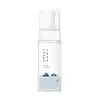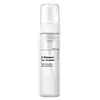What's inside
What's inside
 Key Ingredients
Key Ingredients

 Benefits
Benefits

 Concerns
Concerns

 Ingredients Side-by-side
Ingredients Side-by-side

Water
Skin ConditioningDisodium Cocoyl Glutamate
CleansingGlycerin
HumectantCoco-Glucoside
CleansingDisodium Cocoamphodiacetate
CleansingLauryl Glucoside
CleansingMethylpropanediol
SolventButylene Glycol
HumectantSea Water
HumectantHyaluronic Acid
HumectantHydrolyzed Hyaluronic Acid
HumectantSodium Hyaluronate
HumectantDecyl Glucoside
CleansingSalix Alba Bark Extract
AstringentCamellia Sinensis Leaf Extract
AntimicrobialCentella Asiatica Leaf Extract
Skin ConditioningPinus Densiflora Leaf Extract
AntimicrobialCitrus Aurantium Bergamia Leaf Extract
AstringentCoffea Arabica Seed Extract
MaskingCladosiphon Okamuranus Extract
Skin ConditioningDipotassium Glycyrrhizate
HumectantPanthenol
Skin ConditioningAllantoin
Skin ConditioningSalicylic Acid
MaskingEthylhexylglycerin
Skin ConditioningSodium Chloride
MaskingCaprylyl Glycol
EmollientEthoxydiglycol
HumectantGlyceryl Caprylate
EmollientQuillaja Saponaria Bark Extract
CleansingPolyglyceryl-10 Myristate
Skin ConditioningSodium Citrate
BufferingDipropylene Glycol
HumectantPolyglyceryl-10 Laurate
Skin ConditioningSodium Cocoyl Isethionate
CleansingGlycereth-26
HumectantPropanediol
SolventSodium Phytate
1,2-Hexanediol
Skin ConditioningCitric Acid
Buffering2,3-Butanediol
HumectantWater, Disodium Cocoyl Glutamate, Glycerin, Coco-Glucoside, Disodium Cocoamphodiacetate, Lauryl Glucoside, Methylpropanediol, Butylene Glycol, Sea Water, Hyaluronic Acid, Hydrolyzed Hyaluronic Acid, Sodium Hyaluronate, Decyl Glucoside, Salix Alba Bark Extract, Camellia Sinensis Leaf Extract, Centella Asiatica Leaf Extract, Pinus Densiflora Leaf Extract, Citrus Aurantium Bergamia Leaf Extract, Coffea Arabica Seed Extract, Cladosiphon Okamuranus Extract, Dipotassium Glycyrrhizate, Panthenol, Allantoin, Salicylic Acid, Ethylhexylglycerin, Sodium Chloride, Caprylyl Glycol, Ethoxydiglycol, Glyceryl Caprylate, Quillaja Saponaria Bark Extract, Polyglyceryl-10 Myristate, Sodium Citrate, Dipropylene Glycol, Polyglyceryl-10 Laurate, Sodium Cocoyl Isethionate, Glycereth-26, Propanediol, Sodium Phytate, 1,2-Hexanediol, Citric Acid, 2,3-Butanediol
Water
Skin ConditioningSodium Lauroyl Glutamate
Decyl Glucoside
CleansingGlycerin
HumectantDisodium Cocoamphodiacetate
CleansingLauryl Hydroxysultaine
CleansingSodium Chloride
MaskingSodium Citrate
BufferingHydroxyacetophenone
AntioxidantDipropylene Glycol
HumectantSorbitol
Humectant1,2-Hexanediol
Skin ConditioningLactic Acid
BufferingCaprylyl Glycol
EmollientEthylhexylglycerin
Skin ConditioningCitric Acid
BufferingMelaleuca Alternifolia Leaf Oil
AntioxidantSodium Hyaluronate
HumectantGluconolactone
Skin ConditioningHydroxypropyl Bispalmitamide Mea
EmollientWater, Sodium Lauroyl Glutamate, Decyl Glucoside, Glycerin, Disodium Cocoamphodiacetate, Lauryl Hydroxysultaine, Sodium Chloride, Sodium Citrate, Hydroxyacetophenone, Dipropylene Glycol, Sorbitol, 1,2-Hexanediol, Lactic Acid, Caprylyl Glycol, Ethylhexylglycerin, Citric Acid, Melaleuca Alternifolia Leaf Oil, Sodium Hyaluronate, Gluconolactone, Hydroxypropyl Bispalmitamide Mea
 Reviews
Reviews

Ingredients Explained
These ingredients are found in both products.
Ingredients higher up in an ingredient list are typically present in a larger amount.
1,2-Hexanediol is a synthetic liquid and another multi-functional powerhouse.
It is a:
- Humectant, drawing moisture into the skin
- Emollient, helping to soften skin
- Solvent, dispersing and stabilizing formulas
- Preservative booster, enhancing the antimicrobial activity of other preservatives
Caprylyl Glycol is a humectant and emollient, meaning it attracts and preserves moisture.
It is a common ingredient in many products, especially those designed to hydrate skin. The primary benefits are retaining moisture, skin softening, and promoting a healthy skin barrier.
Though Caprylyl Glycol is an alcohol derived from fatty acids, it is not the kind that can dry out skin.
This ingredient is also used as a preservative to extend the life of products. It has slight antimicrobial properties.
Learn more about Caprylyl GlycolCitric Acid is an alpha hydroxy acid (AHA) naturally found in citrus fruits like oranges, lemons, and limes.
Like other AHAs, citric acid can exfoliate skin by breaking down the bonds that hold dead skin cells together. This helps reveal smoother and brighter skin underneath.
However, this exfoliating effect only happens at high concentrations (20%) which can be hard to find in cosmetic products.
Due to this, citric acid is usually included in small amounts as a pH adjuster. This helps keep products slightly more acidic and compatible with skin's natural pH.
In skincare formulas, citric acid can:
While it can provide some skin benefits, research shows lactic acid and glycolic acid are generally more effective and less irritating exfoliants.
Most citric acid used in skincare today is made by fermenting sugars (usually from molasses). This synthetic version is identical to the natural citrus form but easier to stabilize and use in formulations.
Read more about some other popular AHA's here:
Learn more about Citric AcidDecyl Glucoside is a glucose-based surfactant and emulsion stabilizer. It is created by reacting glucose with the fatty acids from plants.
Surfactants help clean the skin by trapping oil, sebum, and dirt to be washed away. As an emulsion stabilizer, it stabilizes the ingredients in a product by preventing them from separating.
This ingredient is biodegradable and non-toxic. This ingredient is commonly found in baby shampoos.
Decyl Glucoside is sometimes used to stabilize the UV filter Tinosorb.
Learn more about Decyl GlucosideDipropylene Glycol is a synthetically created humectant, stabilizer, and solvent.
This ingredient helps:
Dipropylene glycol is technically an alcohol, but it belongs to the glycol family (often considered part of the ‘good’ alcohols). This means it is hydrating and gentle on skin unlike drying solvent alcohols like denatured alcohol.
As a masking agent, Dipropylene Glycol can be used to cover the smell of other ingredients. However, it does not have a scent.
Studies show Dipropylene Glycol is considered safe to use in skincare.
Learn more about Dipropylene GlycolDisodium Cocoamphodiacetate is a surfactant and helps cleanse skin. It is created from the fatty acids of coconut oil.
Surfactants help rinse oil, dirt, and other pollutants easily from skin. It has a faint fruit-like scent.
Ethylhexylglycerin (we can't pronounce this either) is commonly used as a preservative and skin softener. It is derived from glyceryl.
You might see Ethylhexylglycerin often paired with other preservatives such as phenoxyethanol. Ethylhexylglycerin has been found to increase the effectiveness of these other preservatives.
Glycerin is already naturally found in your skin. It helps moisturize and protect your skin.
A study from 2016 found glycerin to be more effective as a humectant than AHAs and hyaluronic acid.
As a humectant, it helps the skin stay hydrated by pulling moisture to your skin. The low molecular weight of glycerin allows it to pull moisture into the deeper layers of your skin.
Hydrated skin improves your skin barrier; Your skin barrier helps protect against irritants and bacteria.
Glycerin has also been found to have antimicrobial and antiviral properties. Due to these properties, glycerin is often used in wound and burn treatments.
In cosmetics, glycerin is usually derived from plants such as soybean or palm. However, it can also be sourced from animals, such as tallow or animal fat.
This ingredient is organic, colorless, odorless, and non-toxic.
Glycerin is the name for this ingredient in American English. British English uses Glycerol/Glycerine.
Learn more about GlycerinChances are, you eat sodium chloride every day. Sodium Chloride is also known as table salt.
This ingredient has many purposes in skincare: thickener, emulsifier, and exfoliator.
You'll most likely find this ingredient in cleansers where it is used to create a gel-like texture. As an emulsifier, it also prevents ingredients from separating.
There is much debate on whether this ingredient is comedogenic. The short answer - comedogenic ratings don't tell the whole story. Learn more about comegodenic ratings here.
The concensus about this ingredient causing acne seems to be divided. Research is needed to understand if this ingredient does cause acne.
Scrubs may use salt as the primary exfoliating ingredient.
Learn more about Sodium ChlorideSodium Citrate is the sodium salts of citric acid. In skincare, it is used to alter pH levels and acts as a preservative.
Its main functions are to maintain the pH of a product and neutralize metal ions.
The acidity of our skin is maintained by our glands and skin biome; normal pH level of skin is slightly acidic (~4.75-5.5).
Being slightly acidic allows our skin to create an "acid mantle". This acid mantle is a thin barrier that protects our skin from bacteria and contaminants.
Learn more about Sodium CitrateSodium Hyaluronate is hyaluronic acid's salt form. It is commonly derived from the sodium salt of hyaluronic acid.
Like hyaluronic acid, it is great at holding water and acts as a humectant. This makes it a great skin hydrating ingredient.
Sodium Hyaluronate is naturally occurring in our bodies and is mostly found in eye fluid and joints.
These are some other common types of Hyaluronic Acid:
Learn more about Sodium HyaluronateWater. It's the most common cosmetic ingredient of all. You'll usually see it at the top of ingredient lists, meaning that it makes up the largest part of the product.
So why is it so popular? Water most often acts as a solvent - this means that it helps dissolve other ingredients into the formulation.
You'll also recognize water as that liquid we all need to stay alive. If you see this, drink a glass of water. Stay hydrated!
Learn more about Water